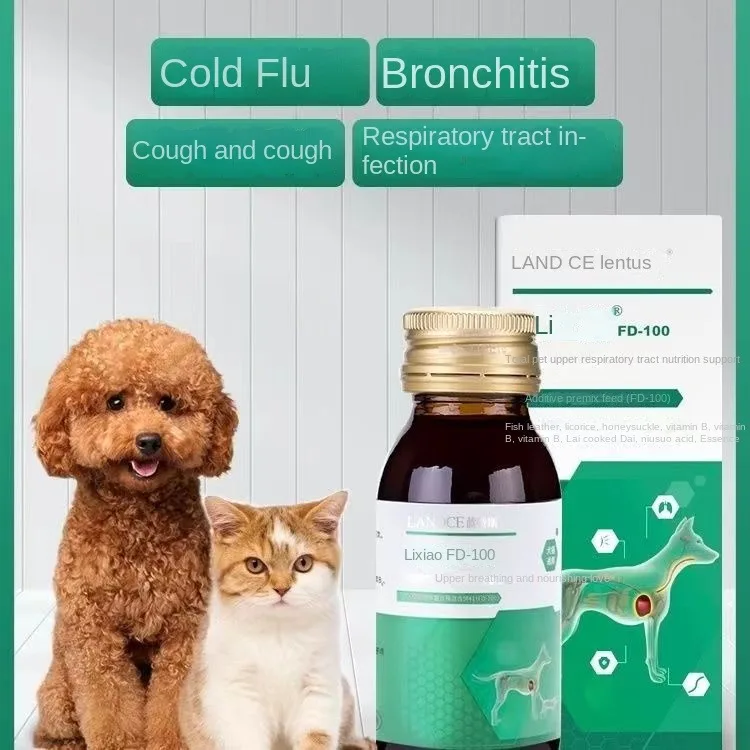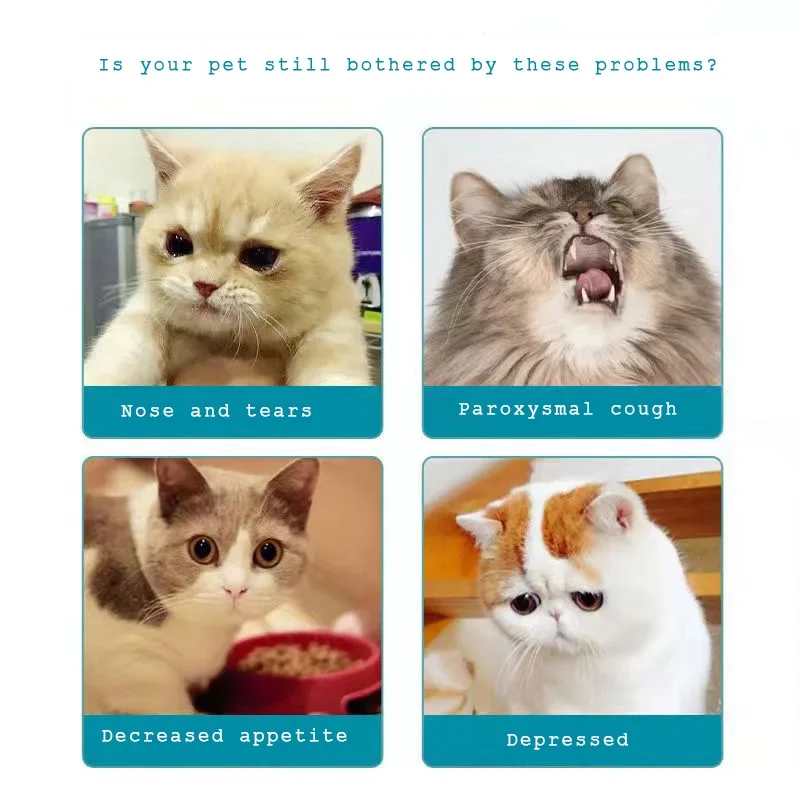Introduction to Kennel Cough in Cats
When we think of kennel cough, dogs often come to mind as the primary sufferers. This contagious respiratory disease, formally known as canine infectious tracheobronchitis, is prevalent among canines, especially those in close quarters. However, do cats get kennel cough? Understanding feline respiratory health is crucial for cat owners, particularly those with multi-pet households or those who frequent environments where cats and dogs intermingle. This comprehensive guide explores whether cats can get kennel cough, the symptoms, diagnosis, treatment, and prevention. By the end, you’ll have a clear understanding of how to identify and manage respiratory issues in cats.

What Is Kennel Cough?
Kennel cough is a highly contagious respiratory disease that affects the upper airways in dogs. It’s caused by various pathogens, including bacteria like Bordetella bronchiseptica and viruses such as canine adenovirus and parainfluenza virus. These pathogens lead to inflammation of the trachea and bronchi, resulting in a persistent, hacking cough. The disease is typically spread through direct contact, airborne droplets, or contaminated surfaces. While kennel cough is primarily associated with dogs, understanding its impact on other animals, including cats, is essential for comprehensive pet care.
Common Symptoms in Dogs
In dogs, common symptoms of kennel cough include a persistent, dry, hacking cough that may resemble the sound of honking. Other symptoms can include sneezing, nasal discharge, lethargy, and a decreased appetite. The cough often worsens with physical activity or excitement, making it a noticeable concern for pet owners. While these symptoms are well-documented in dogs, the manifestation in cats can vary, necessitating a closer examination of feline-specific signs.
Transmission Methods
Kennel cough is highly contagious and can spread rapidly in environments where numerous dogs are housed together, such as kennels, shelters, and dog parks. Transmission occurs through direct contact with an infected animal, inhaling airborne droplets from a cough or sneeze, or coming into contact with contaminated surfaces such as food bowls or bedding. Understanding these transmission methods is crucial for preventing the spread of the disease to other pets.
Can Cats Get Kennel Cough?
The question of whether cats can get kennel cough has intrigued pet owners and veterinarians alike. While cats are not the primary hosts for the disease, they can be susceptible to certain respiratory pathogens that cause similar symptoms.
Feline Bordetellosis
Cats can contract respiratory infections caused by the Bordetella bronchiseptica bacterium, which is one of the primary pathogens responsible for kennel cough in dogs. This condition in cats is known as feline bordetellosis.
Symptoms in Cats
Symptoms of feline bordetellosis can include sneezing, nasal discharge, coughing, difficulty breathing, and fever. The severity of symptoms can vary, with some cats displaying mild signs while others may experience more severe respiratory distress. Understanding these symptoms helps in early detection and treatment.
Risk Factors
Cats that are more likely to contract feline bordetellosis include those living in multi-pet households, shelters, or catteries where they are in close contact with other animals. Kittens, elderly cats, and cats with weakened immune systems are also at higher risk. Recognizing these risk factors helps in implementing preventive measures.
Viral Infections
In addition to bacterial infections, cats can also suffer from viral respiratory infections that manifest with symptoms similar to kennel cough.
Feline Herpesvirus
Feline herpesvirus (FHV) is a common respiratory infection in cats that can cause symptoms such as sneezing, nasal discharge, coughing, and eye discharge. While not the same as kennel cough, it can present with overlapping symptoms, making diagnosis challenging. Understanding feline herpesvirus helps in differentiating it from other respiratory conditions.
Feline Calicivirus
Feline calicivirus (FCV) is another viral infection that can cause upper respiratory symptoms in cats. Symptoms can include sneezing, nasal congestion, coughing, mouth ulcers, and fever. Like FHV, FCV can cause symptoms similar to kennel cough, necessitating accurate diagnosis and treatment.
Diagnosis of Respiratory Infections in Cats
Accurate diagnosis of respiratory infections in cats is crucial for effective treatment and management. Understanding the diagnostic process helps pet owners in seeking timely veterinary care.
Veterinary Examination
A thorough veterinary examination is the first step in diagnosing respiratory infections in cats. The veterinarian will perform a physical exam, listen to the cat’s lungs and heart, and evaluate symptoms such as coughing, sneezing, nasal discharge, and difficulty breathing. Gathering a detailed history of the cat’s symptoms, environment, and contact with other animals is essential. This information helps in narrowing down potential causes and guiding further diagnostic tests.
Physical Examination
During the physical examination, the veterinarian will check the cat’s overall health, including the respiratory rate, heart rate, and temperature. Observing the cat’s breathing patterns and auscultating the lungs can provide insights into the severity of the respiratory infection. Physical examination findings help in determining the next steps for diagnosis and treatment.
Symptom Assessment
Assessing the symptoms helps in distinguishing between different types of respiratory infections. For example, the presence of mouth ulcers might suggest calicivirus, while ocular discharge could indicate herpesvirus. Understanding the specific symptoms aids in targeting the diagnosis and treatment plan.

Diagnostic Tests
Several diagnostic tests can be used to identify the specific cause of respiratory infections in cats.
Nasal and Throat Swabs
Nasal and throat swabs can be taken to identify the presence of specific bacteria or viruses. These samples are then analyzed in a laboratory to detect pathogens such as Bordetella bronchiseptica, feline herpesvirus, and feline calicivirus. Nasal and throat swabs provide valuable information for accurate diagnosis.
Blood Tests
Blood tests can help assess the cat’s overall health and detect any signs of infection or inflammation. Elevated white blood cell counts may indicate an ongoing infection, while serological tests can identify antibodies against specific pathogens. Blood tests provide complementary information to support the diagnosis.
Imaging Studies
Imaging studies such as chest X-rays can be used to evaluate the extent of respiratory involvement and detect any underlying issues such as pneumonia or bronchitis. These imaging studies can provide valuable insights into the severity of the infection and guide the treatment plan.
Treatment and Management of Respiratory Infections in Cats
Effective treatment and management of respiratory infections in cats are crucial for their recovery and overall well-being. Understanding the treatment options helps pet owners in providing appropriate care for their feline companions.
Antibiotic Therapy
In cases of bacterial infections such as feline bordetellosis, antibiotic therapy is commonly used to target and eliminate the bacteria.
Prescription Antibiotics
The veterinarian will prescribe antibiotics based on the specific bacteria identified and the severity of the infection. Common antibiotics used include doxycycline, amoxicillin, and enrofloxacin. Following the veterinarian’s instructions and completing the full course of antibiotics is essential to ensure effective treatment.
Supporting Immune Function
In addition to antibiotics, supporting the cat’s immune function can aid in recovery. Providing a balanced diet, ensuring proper hydration, and minimizing stress can help strengthen the cat’s immune system and improve response to treatment.
For viral infections such as feline herpesvirus and calicivirus, antiviral medications may be used to manage symptoms and reduce the severity of the infection.
Antiviral medications such as famciclovir may be prescribed for severe cases of feline herpesvirus. These medications help reduce viral replication and alleviate symptoms. Following the veterinarian’s recommendations and monitoring the cat’s response to antivirals is crucial for effective management.
Symptomatic Care
Symptomatic care is essential for viral infections, as there are no specific antiviral treatments for calicivirus.
Supportive Care
Supportive care is crucial for managing respiratory infections and ensuring the cat’s overall well-being.
Hydration and Nutrition
Ensuring proper hydration is essential, especially if the cat is experiencing nasal congestion or mouth ulcers that make eating and drinking difficult. Offering wet food, broth, or flavored water can encourage the cat to stay hydrated. Providing a balanced diet with easy-to-eat, nutrient-rich foods can support the cat’s recovery.
Humidification
Using a humidifier in the cat’s living area can help soothe the airways and reduce nasal congestion. The added moisture can make breathing easier and alleviate discomfort. Humidification is a simple yet effective measure for respiratory relief.
Isolation and Hygiene
Isolating the infected cat from other pets can prevent the spread of the infection. Maintaining good hygiene, including regular cleaning of litter boxes, food bowls, and bedding, can help reduce the risk of transmission. Isolation and hygiene measures are essential for containing the infection.

Preventing Respiratory Infections in Cats
Preventing respiratory infections is crucial for maintaining your cat’s health and well-being. Implementing preventive measures can reduce the risk of infections and ensure a healthy environment for your feline companions.
Vaccination
Vaccination is a key preventive measure for protecting cats against common respiratory infections.
Core Vaccinations
Core vaccinations for cats include those for feline herpesvirus, calicivirus, and panleukopenia. These vaccines are typically administered during kittenhood and followed by regular boosters. Ensuring your cat is up to date with core vaccinations provides essential protection against respiratory infections.
Bordetella Vaccination
In some cases, the veterinarian may recommend the Bordetella bronchiseptica vaccination, especially for cats living in multi-pet households or those frequently exposed to other animals. This vaccine can help protect against feline bordetellosis. Discussing vaccination options with your veterinarian ensures your cat receives appropriate protection.
Reducing Exposure to Infected Animals
Minimizing your cat’s exposure to infected animals can reduce the risk of respiratory infections.
Isolating Sick Pets
If you have multiple pets and one is showing signs of respiratory infection, isolate the sick pet to prevent the spread of the infection. This measure helps protect healthy pets from exposure. Ensuring proper isolation can effectively contain the infection.
Avoiding Crowded Environments
Avoiding crowded environments such as shelters, catteries, and boarding facilities can reduce the risk of exposure to respiratory pathogens. If boarding your cat is necessary, choose facilities with strict health and hygiene protocols. Reducing exposure to crowded environments minimizes the risk of infection.
Maintaining a Clean Environment
Maintaining a clean environment is essential for reducing the risk of respiratory infections.
Regular Cleaning
Regularly clean your cat’s living area, including litter boxes, food and water bowls, and bedding. Use pet-safe disinfectants to eliminate pathogens and reduce the risk of contamination. Regular cleaning helps maintain a healthy environment.
Proper Ventilation
Ensure proper ventilation in your home to reduce the buildup of airborne pathogens. Good air circulation can help prevent the spread of respiratory infections. Proper ventilation creates a healthier living environment for your cat.
Monitoring Health and Seeking Veterinary Care
Regular monitoring of your cat’s health and seeking prompt veterinary care can help detect and manage respiratory infections early.
Regular Check-Ups
Schedule regular veterinary check-ups to monitor your cat’s health and catch any signs of respiratory infection early. Early detection can lead to prompt treatment and better outcomes. Regular check-ups are essential for maintaining your cat’s health.
Prompt Attention to Symptoms
If your cat shows any signs of respiratory infection, such as coughing, sneezing, nasal discharge, or difficulty breathing, seek veterinary care immediately. Prompt diagnosis and treatment can prevent the infection from worsening and ensure your cat’s swift recovery. Timely attention to symptoms ensures effective care.
Conclusion
While kennel cough is primarily associated with dogs, cats can also suffer from respiratory infections caused by similar pathogens. Understanding the symptoms, diagnosis, treatment, and prevention of feline respiratory infections is crucial for providing effective care for your feline companions. By implementing preventive measures, seeking timely veterinary attention, and providing appropriate treatment, you can ensure your cat’s health and well-being.
